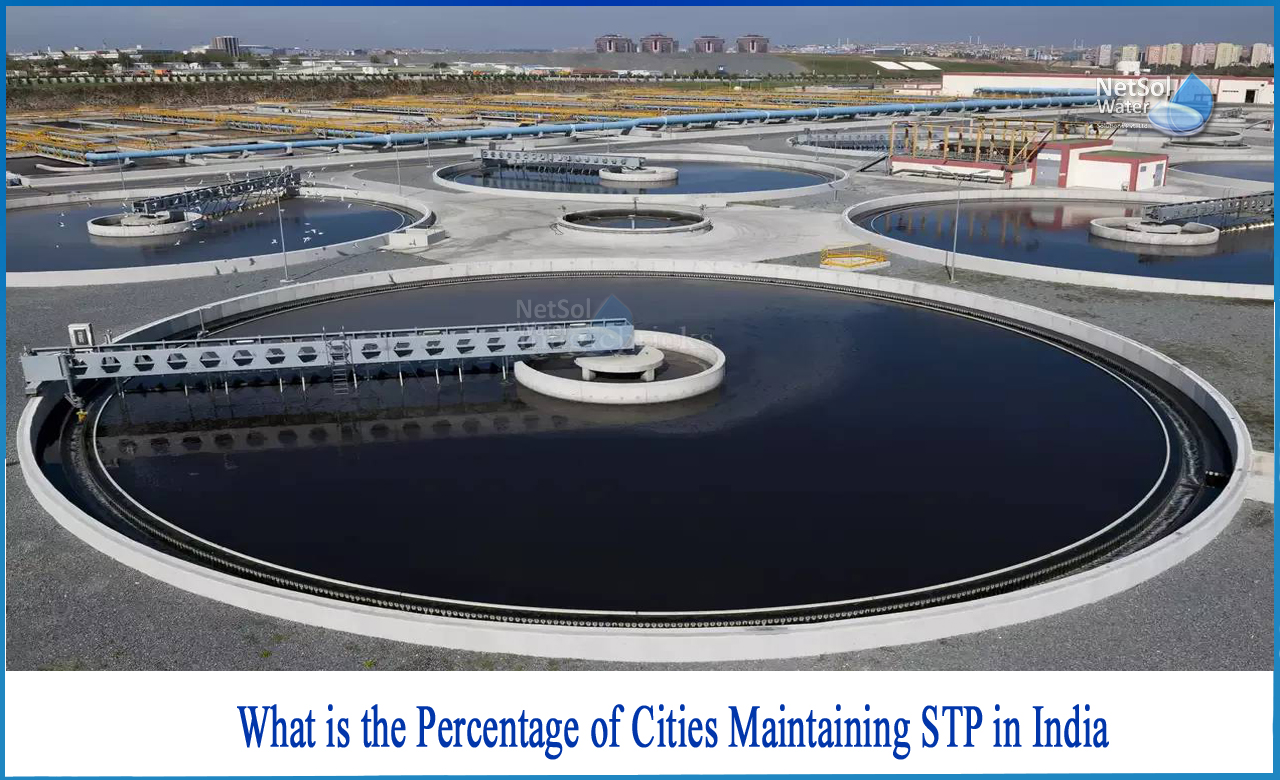What is the percentage of cities maintaining STP in India?
Domestic sewage disposal from cities and towns is India's leading source of water pollution.
The combined sewage output of all Class I and Class II cities is estimated to be 29129 MLD. In comparison, the installed sewage treatment capacity is only 6190 MLD. Between sewage generation and installed sewage treatment capacity, there is a 22939 MLD gap. This disparity is 78.7 percent.
Another 1742.6 MLD of sewage treatment capacity is being planned or built. Even if this is added to existing capacity, there is a sewage treatment capacity gap of 21196 MLD (equal to 72.7 percent).
The predicted sewage generation
The predicted sewage generation from Class I cities and Class II towns is 29129 MLD, which is expected to rise to 33212 MLD by 2050 assuming a 30% decadal increase in urban population.
Against this, there are STPs with a capacity of 6190 MLD, with another 1743 MLD on the way. As a result, the existing treatment capacity only covers 18.6% of current sewage generation, and another 5.2 percent is being added. However, STP capacity utilization is just 72.2 percent, resulting in only 13.5 percent of sewage being treated.
This clearly demonstrates the dire state of sewage treatment, which is the primary source of river and lake pollution.There is an urgent need to increase sewage treatment capacity and optimize its utilization in order to improve the water quality of rivers and lakes.
Role of Government
1: State governments should recognize the problem of water pollution and take responsibility for establishing sewage treatment plants in cities and towns to prevent this pollution. This activity must be recognized as one of the most important indicators of a state's overall development. If this problem is not addressed immediately, it will quickly escalate to an unmanageable level.
The use of conventionally treated sewage for irrigation of crops that are not eaten raw is also important for three reasons:
i). saving fresh water in light of our diminishing water resources,
ii). preventing nutrient pollution of our water bodies, and
iii). utilizing the nutrient value of sewage in irrigation.
2: The importance of using treated sewage for irrigation was emphasized more than thirty years ago, but this issue is still largely ignored by state governments. As a result, state governments must implement sewage diversion and utilization plans as part of all sewage treatment plans. Sewage diversion schemes should be designed with a plan period of at least 25-30 years.
3: Given the rising disparity between sewage generation and treatment capacity, state governments must develop a well-thought-out action plan to close the gap in the shortest possible time. In the first phase, large cities with more severe pollution problems, cities/towns responsible for pollution of severely polluted stretches of rivers, and cities/towns polluting environmentally sensitive water bodies would be prioritized. Continuous capacity upgrades in cities/towns seized in the first phase will be required as the population grows, as will the deployment of subsequent phases.
4: Treatment schemes based on grit removal, followed by an up-flow-anaerobic-sludge-blanket reactor, followed by a polishing pond, are suitable for all medium and small-sized cities/towns where sufficient land is available.
Successful operation of treatment plants
The operation of these plants is somewhat delicate. Continuous uniform feeding to the plant, proper grit removal, maintenance of design VSS concentration and VSS/TSS ratio in UASB reactor, cleaning accumulated sludge from polishing pond after a year, avoiding stagnation of water in ponds to prevent excessive algal growth, and providing proper weir length and baffle in the outlet structure of polishing pond are the most important factors for successful operation of such plants and must not be overlooked.
The treatment plan based on a succession of Waste Stabilization Ponds (WSP) technologies is quite robust, one of the most cost-effective, and ideal for small communities with plenty of land. The most important factors for successful operation of such plants are continuous uniform feeding to the plant, cleaning accumulated sludge from ponds after suitable intervals (preferably less than 6 months for primary anaerobic ponds and once a year for subsequent ponds), avoiding stagnation of water in ponds to prevent excessive algal growth, providing proper weir length and baffle in the outlet structure of pond, and not allowing hyacinth growth.
Netsol Water is Greater Noida-based leading water & wastewater treatment plant manufacturer. We are industry's most demanding company based on client review and work quality. We are known as best commercial RO plant manufacturers, industrial RO plant manufacturer, sewage treatment plant manufacturer, Water Softener Plant Manufacturers and effluent treatment plant manufacturers. Apart from this 24x7 customer support is our USP. Call on +91-9650608473, or write us at enquiry@netsolwater.com for any support, inquiry or product-purchase related query.



